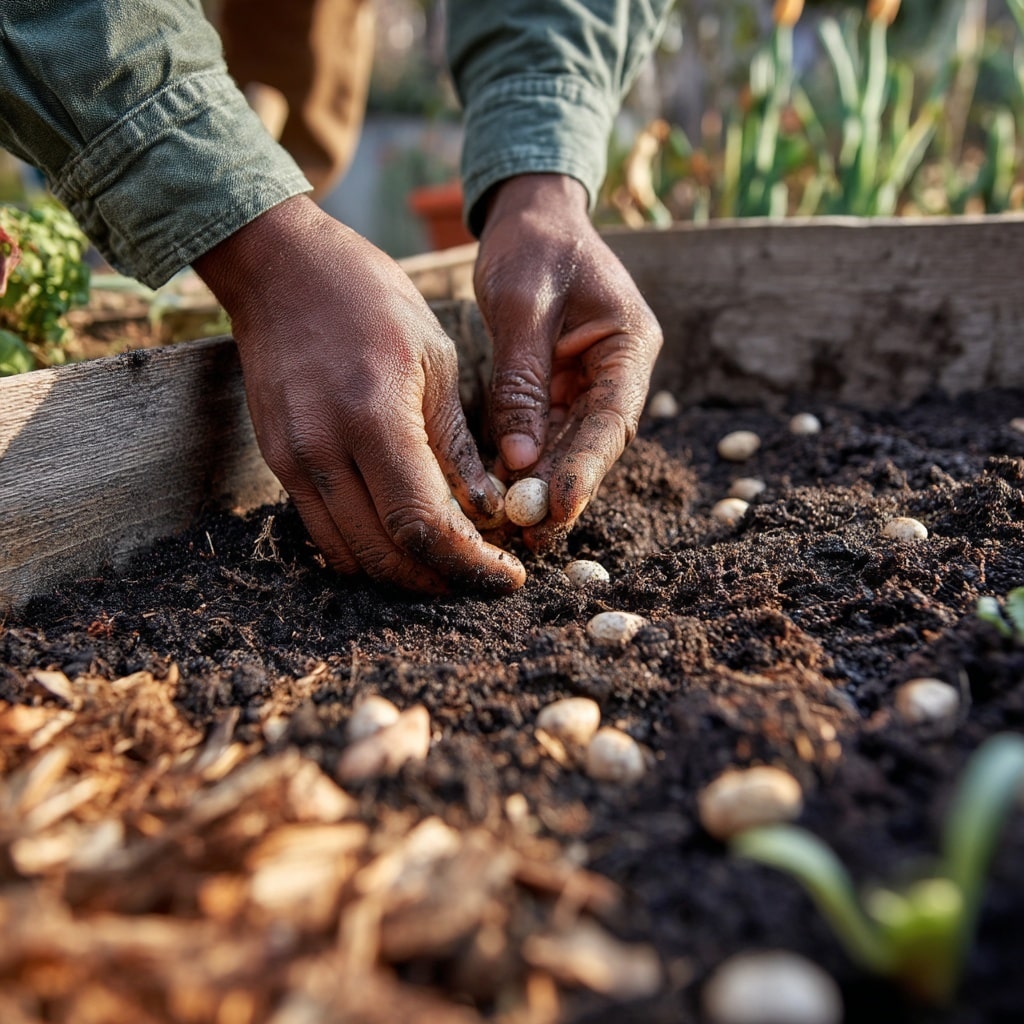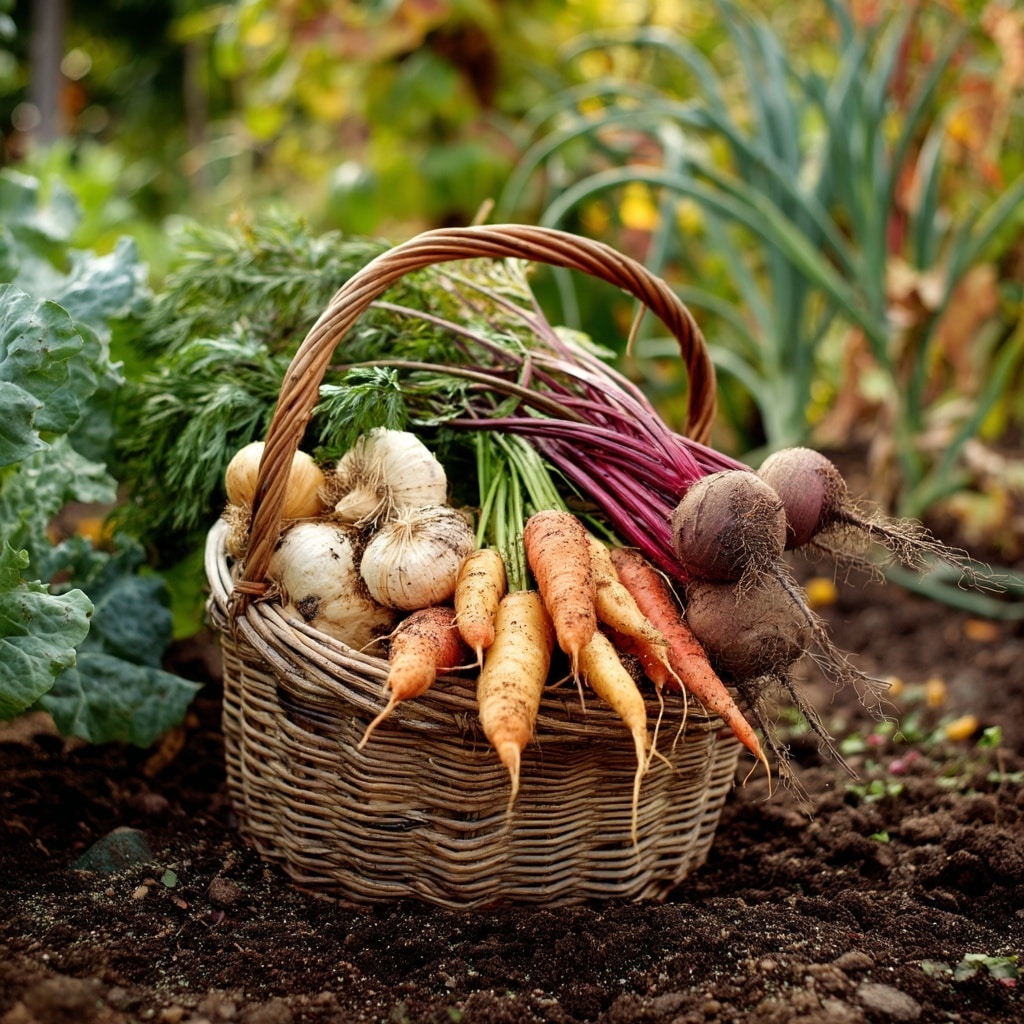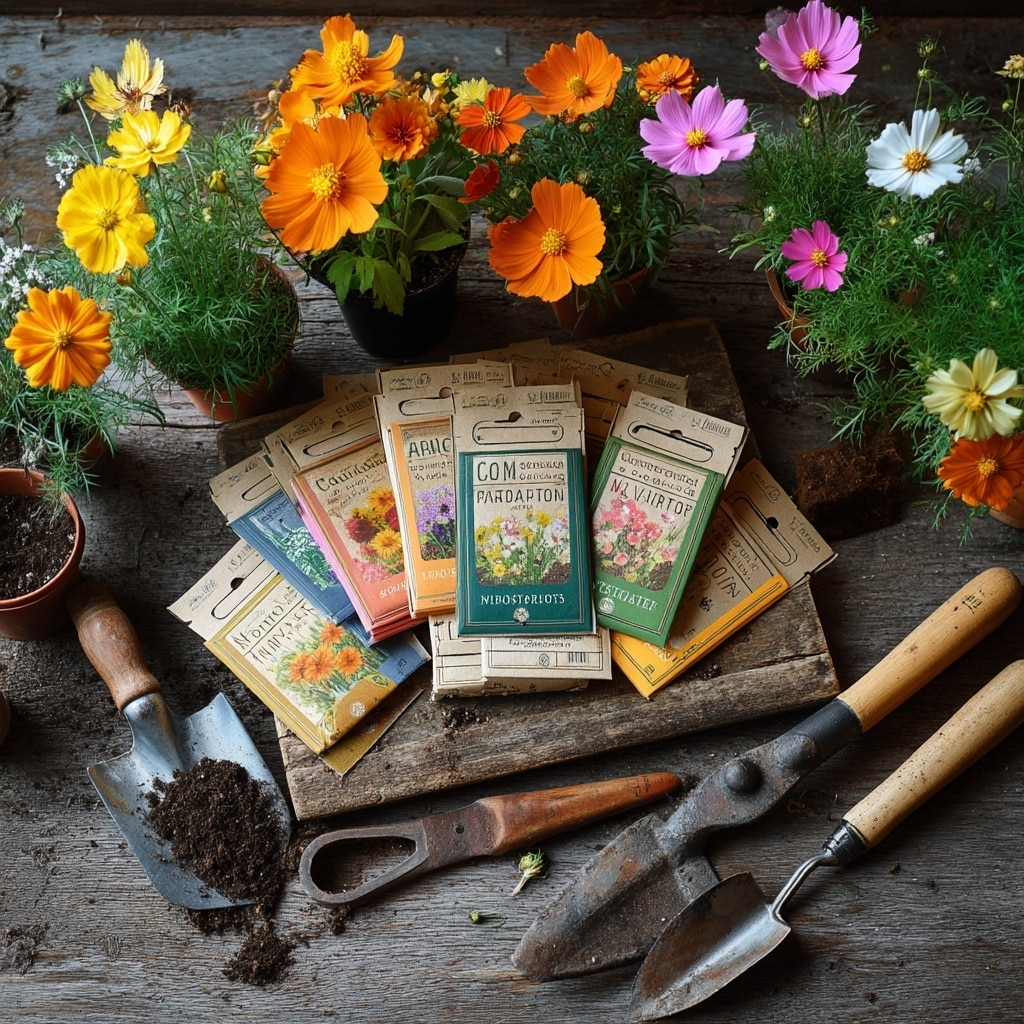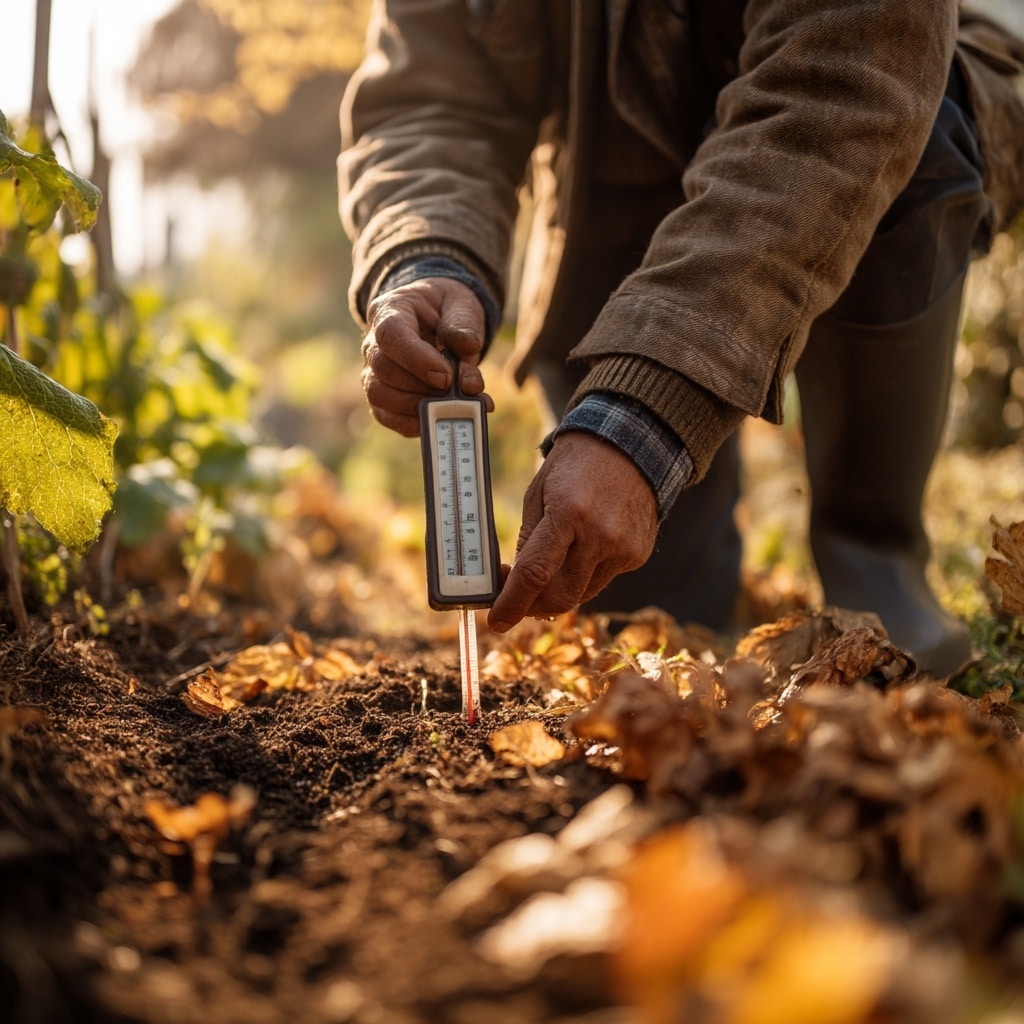Plant seeds in the fall and your spring garden will thank you. While most gardeners are packing away tools for winter, this quieter season offers a perfect opportunity to tuck certain seeds into the soil. As the ground cools and moisture increases, many flowers and vegetables actually benefit from overwintering, sprouting stronger and earlier when spring returns.
Rather than waiting for warmer days, fall is the ideal time to plant cold-hardy seeds that thrive with a natural period of rest. Whether you’re in a frost-prone region or a milder climate, strategic fall planting can lead to healthier roots, earlier blooms, and an even more rewarding garden next season.
Table of Contents
When to Plant Seeds in the Fall
Knowing exactly when to plant in the fall depends on your local climate and the types of seeds you’re working with. In cooler zones, timing is everything—plant too early, and seeds may sprout prematurely; plant too late, and they might not settle before winter.
For Cold Climates (Zones 2–7):
Wait until after your first hard frost—when garden growth has stopped but before the ground freezes. This allows seeds to remain dormant through winter without germinating too early. Most seeds need soil temperatures around 40–50°F (4–10°C) to stay inactive until spring.
For Warm Climates (Zones 8–11):
In milder regions, you can plant seeds just before your rainy season begins—typically in late fall to early winter. The cooler nights and natural moisture help with germination. Some seeds may even sprout and establish themselves lightly before resuming growth in spring.
To avoid mistakes, always check the seed packet and track your region’s first and last frost dates. You can often get accurate, local planting advice from your extension office or gardening club.
How to Plant Seeds in the Fall

The process to plant seeds in fall is simple, but a few key steps make all the difference when you want strong, healthy growth after winter.
1. Prep the Soil
Start by clearing away debris, weeds, and old plants from your garden beds. Then add a thin layer of organic compost to enrich the soil—this gives seeds a nutrient boost when they begin to grow in spring.
2. Know Your Seed’s Needs
Some seeds require cold stratification, meaning they need a prolonged chill to trigger germination. Fall naturally provides that. Seeds with thick outer coatings—like poppies, lupines, or echinacea—often fall into this group.
Other seeds don’t need the cold, but still benefit from early planting and winter moisture. Always read the seed packet for instructions on whether it needs cold exposure or immediate warmth.
3. Plant and Protect
Sow seeds at the recommended depth and spacing. Lightly press them into the soil, and cover with mulch (like straw or shredded leaves) to protect from temperature swings and erosion.
If seedlings sprout too early due to a warm spell, add an extra mulch layer to help them survive until spring.
If you garden in zones 2 to 8, fall is an ideal time to plant hardy annuals and perennials that benefit from a winter chill. These seeds often require cold stratification, and sowing them in the fall lets nature handle that process for you.
Many of these flowers will germinate in early spring, grow strong, and bloom earlier than if planted after the last frost.
Best Seeds to Plant in Fall for Warm Climates

If you live in a region where the ground doesn’t freeze, you have the perfect opportunity to plant a variety of flowers that can germinate in cooler temperatures and take advantage of winter rains.
These seeds do not require cold stratification and thrive in zones where winters are mild but moist.
Fall-Planting Flower Seeds for Warm Climates:
- Calendula (Calendula officinalis) – Easy to grow, with long-lasting yellow or orange blooms
- Cosmos – Feathery foliage and bright daisy-like flowers, perfect for borders
- Nasturtium (Tropaeolum) – Edible, trailing flowers that add color to containers and beds
- Sweet Peas (Lathyrus odoratus) – Fragrant climbers that benefit from a head start
- Morning Glory (Ipomoea tricolor) – Fast-growing vines with vibrant trumpet-shaped blooms
- Spider Flower (Cleome) – Unique, tall flower spikes that attract pollinators
- Honeywort (Cerinthe) – Unusual bluish flowers with silvery foliage
- Standing Cypress (Ipomopsis rubra) – A red tubular flower favorite for hummingbirds
- Love-in-a-Mist (Nigella damascena) – Wispy foliage and seed pods perfect for cutting gardens
- Bells of Ireland (Moluccella laevis) – Tall spires of green bell-shaped calyces for texture
Warm regions benefit from the ability to plant these seeds just before winter rains begin, giving them plenty of time to establish before spring’s warmth encourages blooming.
Best Seeds to Plant in Fall for Cool Climates

If you garden in zones 2 to 8, fall is an ideal time to plant hardy annuals and perennials that benefit from a winter chill. These seeds often require cold stratification, and sowing them in the fall lets nature handle that process for you.
Many of these flowers will germinate in early spring, grow strong, and bloom earlier than if planted after the last frost.
Cold-Hardy Seeds to Plant in Fall:
- Poppy (Papaveraceae) – Prefers cold winters; produces delicate, papery flowers
- Coneflower (Echinacea) – Pollinator favorite, drought-tolerant once established
- Columbine (Aquilegia) – Woodland beauty that thrives in partial shade
- Cornflower (Centaurea cyanus) – Blue-toned blooms perfect for cutting
- Foxglove (Digitalis) – Tall spikes for shady borders (toxic, handle with care)
- Black-Eyed Susan (Rudbeckia) – Reliable bloomer with bright yellow petals
- Forget-Me-Not (Myosotis) – Compact plants with dainty blue blooms
- Lupine (Lupinus polyphyllus) – Adds height and color to spring beds
- Delphinium – Striking vertical flower spikes for cool climates
- Baby Blue Eyes (Nemophila menziesii) – Low-growing, early bloomers for ground cover
- Sweet William (Dianthus barbatus) – Fragrant flowers in pinks and reds
- Sea Holly (Eryngium) – Drought-tolerant with thistle-like, metallic blooms
- Snapdragon (Antirrhinum) – Short-lived perennial that performs well in cool zones
- Tickseed (Coreopsis tinctoria) – Wildflower with long-lasting daisy-like blooms
- Penstemon – Tubular flowers loved by hummingbirds
- Love-In-A-Mist (Nigella) – Self-seeds readily and adds soft texture
- Globe Gilia (Gilia capitata) – Native wildflower with round blue blooms
By planting these cold-tolerant varieties in fall, you’re giving them the conditions they need to break dormancy naturally and bloom without delay when spring arrives.
Fall Vegetables You Can Plant Now

Flowers aren’t the only things that benefit from fall planting—many vegetables also grow better when started in cooler weather. Root crops, leafy greens, and alliums thrive in chilly conditions and often taste sweeter after a frost.
Depending on your zone, some of these veggies may overwinter quietly, while others keep growing slowly and produce an early harvest in spring.
Onions, Garlic & Shallots
These members of the allium family love a long growing season. Plant cloves or sets in fall to establish roots before winter and grow strong through spring. You’ll harvest large, flavorful bulbs by summer.
Root Vegetables
- Turnips
- Carrots
- Radishes
- Beets
These crops don’t mind cool soil and may even sprout slightly before going dormant. A late-fall planting gives them a jumpstart come spring—and cooler temperatures can enhance their natural sweetness.
Lettuce & Leafy Greens
Using a cold frame or row cover, you can plant lettuces, spinach, arugula, and other greens well into fall. In mild climates, these can continue producing all winter long. In colder areas, they’ll lie dormant and resprout early in spring.
Broccoli & Cauliflower
In mid-to-warm climates, fall is a great time to sow these brassicas. They need cooler temperatures to form tight heads and are more likely to thrive when started now than in hot summer weather.
Peas
Peas prefer cool weather and will establish quickly in fall. In warmer zones, they may grow slowly through winter and be ready for an early spring harvest. Just make sure to provide a trellis or support before planting.
Final Fall Planting Tips & Common Questions

Even seasoned gardeners have questions when it comes to fall planting. Understanding how seasonal changes affect germination, growth, and timing helps you plant smarter and get better results.
Do All Plants Reseed Naturally in the Fall?
Not necessarily. While many flowers go to seed in late summer and early fall, not all will germinate successfully on their own—especially if your local climate is too wet, too cold, or not cold enough. Always check if the plant self-seeds reliably in your zone, and supplement with direct sowing if needed.
What’s the Easiest Plant to Grow in Fall?
If you’re looking for quick wins, try radishes, lettuce, turnips, or spinach. These cool-season veggies grow fast and are perfect for succession planting. Among flowers, poppies, cosmos, and nasturtiums are beginner-friendly fall-sown choices.
What’s the Best Month to Plant in Fall?
Aim to plant seeds once your area has experienced its first hard frost (cold zones) or just before rainy season begins (warm zones). In most regions, late October to early November is the sweet spot for fall planting. This timing ensures seeds stay dormant through winter and germinate at the right time.
Bonus Tip:
If you’re unsure, follow nature’s lead. Many wildflowers drop seeds in autumn and bloom the next spring. Emulating that cycle gives your seeds the best chance to thrive naturally.
Conclusion
Fall may seem like a time to wind down, but it’s actually the perfect season to plant seeds for a vibrant spring garden. Whether you’re working with flowers or vegetables, sowing the right seeds now gives them a head start, builds stronger root systems, and rewards you with earlier blooms and harvests.
By following timing guidelines, choosing the right varieties for your climate, and preparing your soil properly, you’ll set your garden up for success — long before the first warm breeze of spring arrives.
So grab your gloves, a packet of seeds, and give your garden a little love before winter. You’ll be glad you did when everything comes to life next season.






